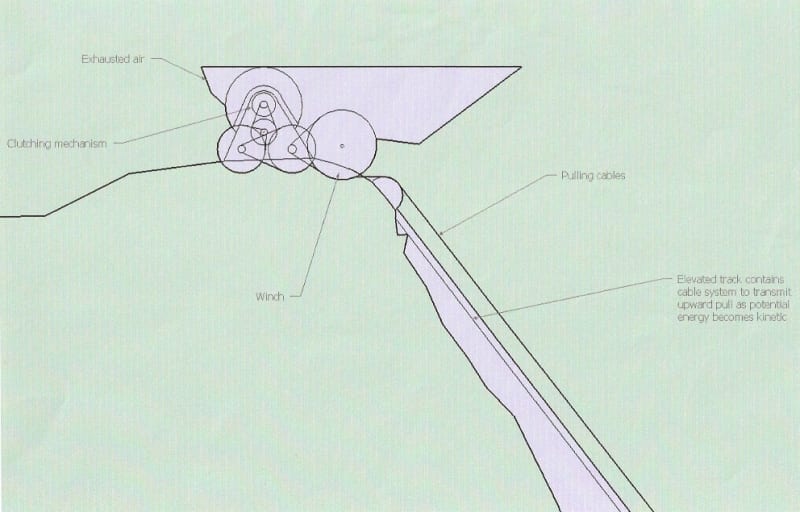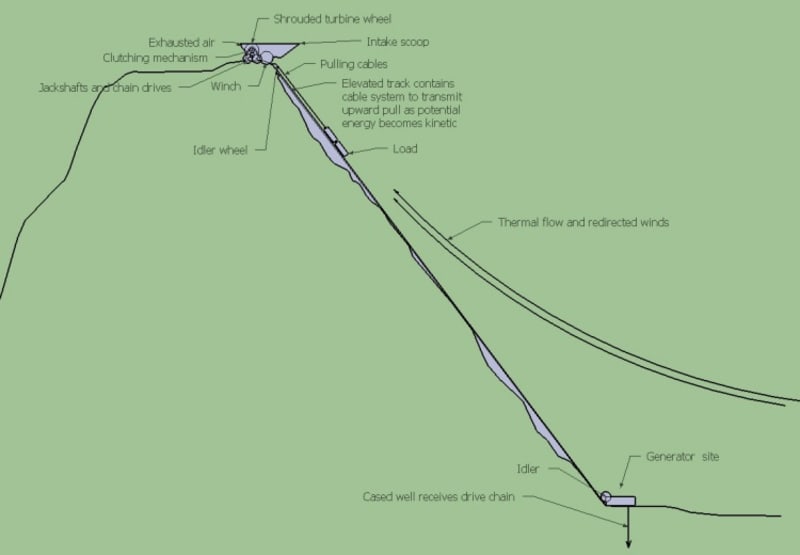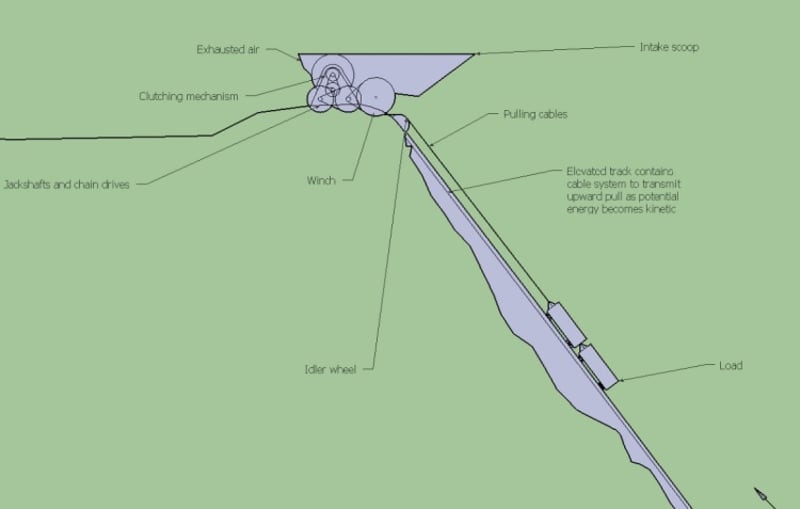Mountains are impediments to wind flow, so redirected wind gains velocity as it is forced to follow the contour of the mountain. Thermal updrafts from the sun-heated valley below, follow the same contour. Experiment and accident have revealed that thermal updrafts and winds at mountain-top level are not always present at the surface, but are redirected against a comparatively static cushion of air; thus they are more common and continuous than is generally realized. These updrafts are powerful, unseen and are largely untapped. Nevertheless for this project to be successful, it will have to be properly sited following actual wind measurements taken, notably well above the surface.
I propose to gather and to directly store wind energy in the form of potential energy by elevating a weight on an incline, such as a railroad car on tracks. The collection point of the energy, the top of a mountain, will be positioned hundreds of feet above the valley, and with a proper set of 98%-efficient roller chain drives, jack-shafts and winch, the turbine will raise the load slowly until it reaches a point near the top. A ratchet-stop mechanism can secure the load at any point in the ascent. When a load has been raised, energy collection can be automatically shifted to the next load.
Advantages of this procedure will be that collected energy:
• can be stored indefinitely with no storage loss
• can be released at a known, continuous rate
• can be used when it is most needed
• can be geared to drive a larger generator at conventional speeds (no frequency conversion required)
Reversing the process, stored energy can be released slowly, without loss due to braking. The generator can be sited at the base of the ridge; or on top, or at any point along the incline. Load cells will permit control of energy release at a continuous rate. Alternatively a continuous loop of roller chain(s) might be employed, eliminating the need for other balancing controls.
The bulk of wind turbines in existence are unsuited to this application. To address this problem, a horizontal-shaft turbine will need to be developed, similar to the wheel of a tangential blower. Wind is not selective about what it strikes, so it must be shrouded, funneled and vented such that collected wind impinges only on the blade we want to push.
If eight roller-chain-to-jack-shaft reductions are employed to raise the load, and half that many are used to harvest it, efficiency losses before and after storage might total 25%. An overall efficiency of 75% has not been achieved by any storage method that won't degrade or requires no energy to maintain.
Storage of large amounts of electrical energy is impractical. Conversion of energy from one form to another incurs loss, but conversion of power from the lower-speed conventional turbines to something usable is a further loss. Production of electricity by wind turbines is presently dependent on availability of wind, not demand. This concept addresses all of these issues.
Like this entry?
-
About the Entrant
- Name:Ken Biddle
- Type of entry:individual
- Software used for this entry:Google Sketchup 2D
- Patent status:pending








